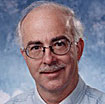Commentary on Psalm 25:1-10
The psalms immediately preceding Psalm 25 form a collection that is arranged in a chiastic pattern as follows:1
A Psalm 15: entrance liturgy
B Psalm 16: psalm of assurance
C Psalm 17: individual lament
D Psalm 18: royal psalm
E Psalm 19: torah psalm
D’ Psalms 20-21: royal psalms
C’ Psalm 22: individual lament
B’ Psalm 23: psalm of assurance
A’ Psalm 24: entrance liturgy
Chiastic patterns highlight the peripheral and central elements — in this case, Psalms 15 and 24, along with Psalm 19. The question in Psalms 15 and 24 concerns who will enter the temple, or more symbolically, who will live in God’s presence. Psalm 19 offers a response –- namely, those who orient themselves to God’s life-giving torah, “instruction” (Psalm 19:7, NRSV “law”).
The question in Psalms 15 and 24 is, in effect, “Who belongs to God?” And Psalm 25 provides a perfect response, continuing the direction articulated in Psalm 19 –- that is, those who offer themselves to God and attend to God’s teaching are the ones who belong to God. Not surprisingly, the Hebrew root behind the noun “torah” (Psalm 19:7) occurs twice as a verb in Psalm 25 (“instructs” in verse 8 and “teach” in verse 12). Plus, there is a noticeable literary link between Psalms 24 and 25. Psalm 24 affirms that those who seek God’s presence will “not lift up their souls to what is false” (24:4). The opening line of Psalm 25 provides the positive contrast to this negative formulation: “To you, O LORD, I lift up my soul.” From the very beginning, the psalmist’s focus is on God. The psalmist emphatically asserts that she or he belongs to God (see also Psalms 86:4; 143:8).
Given that Psalms 15 and 24 probably functioned originally in the context of entering the temple, it may not be coincidental that the verb translated “lift up” is used for offering a sacrifice to God (see Psalm 96:8; Ezekiel 20:31). This dimension of meaning suggests a better translation of Psalm 25:1, “To you, O LORD, I offer my whole being,” or “I offer my life to you, LORD” (CEB). At this point, Psalm 25 anticipates Paul’s invitation in Romans 12:1 “to present your bodies as a living sacrifice, holy and acceptable to God.” As in Psalm 25, this offering or “sacrifice” involves orientation to God’s instruction — in Paul’s words, “so that you may discern what is the will of God” (Romans 12:2).
That belonging to God is manifest in the desire to do God’s will is indicated not only by the repetition of the verbal form of torah in Psalm 25:8, 12 (see above), but also by the appearance of other important words that belong to the vocabulary of teaching and learning:
- the repetition of the Hebrew root translated “Make me to know” in verse 4 and “makes … known” in verse 14
- the repetition of a Hebrew root translated “teach(es)” in verses 4, 5, and 9
- the five-fold occurrence of a Hebrew root translated “way(s)” when it appears as a noun (verses 4, 8, 9) and “Lead(s)” when it appears as a verb (verses 5, 9): The two occurrences in verse 9 are especially interesting, because the root occurs as the first and last word in the verse. The rhetorical effect is to surround or encompass “the humble” with indications of God’s will. The NRSV’s “what is right” translates a single word that is more frequently translated as “justice,” and it often represents a sort of one-word summary of the will of God (see Amos 5:24; Micah 6:8).
- the repetition of the noun translated “paths” in verses 4, 10
In short, the prevalence of the vocabulary of teaching and learning effectively and emphatically communicates the meaning of the psalmist’s choice to offer life to God. To live in God’s presence, to belong to God, means to desire fervently to know God’s will and to do faithfully what God wants done.
Even so, it is clear that the psalmist has not succeeded in doing consistently what God wants done (Psalm 25:7, 11, 18). Therefore, in the final analysis, the psalmist’s belongingness to God is a result not only of the psalmist’s choice to offer life to God, but also a result of God’s willingness to forgive.
The psalmist’s appeal for forgiveness is appropriately grounded in God’s fundamental character. The three-fold repetition of “remember” reinforces this aspect of the appeal. God is called upon to “remember [NRSV “Be mindful of”] your mercy . . . and your steadfast love” (verse 6), to “not remember the sins of my youth” (verse 7), and “according to your steadfast love remember me” (verse 7). The repetition of “steadfast love,” the appeal to “mercy,” and the mention of “sins” and “transgressions” recall Exodus 34:6-7, where God’s character is manifest in God’s willingness to forgive. In short, the psalmist is saved by grace, a reality that calls for “trust” (Psalm 25:2) and makes hope possible (Psalm 25:3, 5, 21 where NRSV “wait” could be translated “hope”).
We too are saved by grace, a reality that we remember and celebrate during the season of Lent. Because we trust that God is gracious, we dare to enter a season of confession and penitence, offering ourselves as a living sacrifice to God and pledging ourselves anew to discern and do God’s will.
On the surface, it may appear that Psalm 25:10 puts conditions on God’s love, limiting it to those who are faithful and obedient. But the psalmist was not entirely faithful and obedient, so the intent of verse 10 must lie elsewhere. Verse 10 suggests, it seems to me, that those who offer their lives to God will find themselves acting in conformity with God’s character; that is, they will increasingly be like God! Thus, the psalmist seems to anticipate Jesus’ invitation, which we might adopt as a Lenten discipline, “Be merciful, just as your Father is merciful” (Luke 6:36).
Notes
1 Commentary first published on this site on Feb. 22, 2015.


February 18, 2018